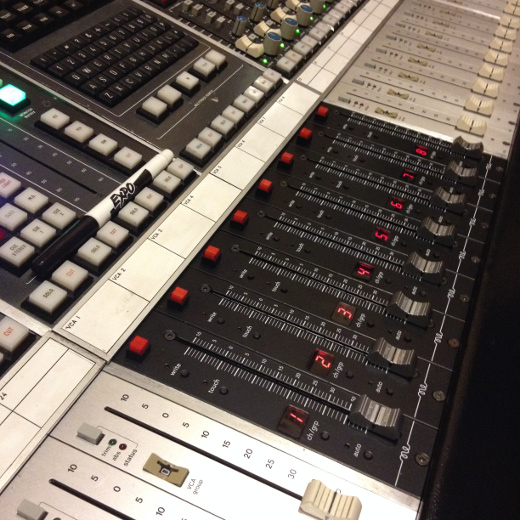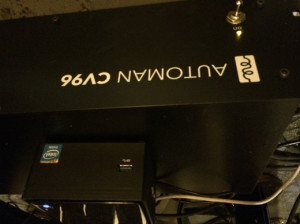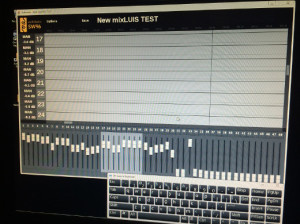Early Adopters: The Bunker Studio Boosts Its SSL 4000 With Automan Automation
The Bunker Studio in South Williamsburg, Brooklyn has never been one to hunker down.
From the launch of its 3,000 foot space in 2012, to its swap from an Auditronics 501 console to a small frame SSL 4000 the following year, “evolve or die” seems to be the facility’s driving business philosophy. So it should be no surprise that the studio’s founders, John Davis and Aaron Nevezie, have just done their vintage board one better.
Now their SSL 4000 features an Automan automation system, and according to the studio it’s the first one in America – a thoroughly modern solution that gives them eight moving faders in the VCA group fader position, while still keeping that functionality intact.
Why tweak such a big, good thing? Nevezie explained to SonicScoop the technical, creative and business considerations that went into the Bunker’s latest gear change.
The Bunker installed its SSL 4000 E last year. How have you, the console, and the room “come together” in that time?
The SSL was a huge upgrade from the 26 channel Auditronics we’d had since the original Bunker Studio. The biggest need that the console met was a larger channel count (40 channels) for the big tracking sessions we found ourselves involved with in Studio A.
Also following along from this, the mix projects we were undertaking were bigger and the flexibility a SSL provides was key — the studio seemed to get much busier after we provided a console that outside engineers were familiar with and could handle the demands of any size session. This board enabled us as engineers to become familiar with working on a large format console, and specifically a console many of our favorite records were recorded and mixed on.
In the time since we installed the SSL Studio A has gained a reputation as one of the premier live tracking rooms in NYC. To match the SSL and make the room even more freelancer-friendly we’ve added a good amount of classic outboard including an additional eight channels of BAE 1084’s, a Manley Vari-Mu, Urei 1178, Eventide H3000, Spectra Sonics 610, and various 500 series toys.
Was the board equipped with automation capabilities of any kind?
The board came with the original SSL VCA automation computer. The system that came with the console would have required a machine room rebuild, extensive 24-hour air conditioning and likely inconvenient maintenance issues.
We had heard rumors of a modern replacement computer being developed by a couple of different manufacturers and it seemed like a good choice to sell the computer back to Sonic Circus. Hedging our bets on someone finally developing a replacement automation system was a logical step, especially since we’d never owned a console with automation and we wouldn’t miss what we’d never had.
That’s sound studio business thinking. So when did it become clear to you that adding automation was a necessary step?
After spending the last couple of years upgrading Studio A to match the SSL and installing the Neve 8058 in Studio B at the start of 2014, automation started to feel like one of the few missing elements. A couple of freelance producers and engineers had expressed interest in using the room for mixing if automation was available, though everyone understood our desire to wait for a modern system.
From there, how did it lead you to select Automan specifically?
As far as we understand, Automan is the first system to give fader automation to a SSL 4K beyond the original SSL automation.
One of the more obvious benefits is the fact that all automation can be performed from prime mix position. The Automan system replaces the 8 VCA group faders with modern moving faders. The original VCA automation didn’t have moving faders — only the Ulitmation SSL’s had this — so it’s great to be able to have the tactile and visual feedback of moving faders. You can bank through all faders and automate any of the VCA’s or switch back to group fader functionality all in the same place.
It replaces the SSL computer with a tiny PC and a rack unit that interfaces with the VCAs, so the electric and cooling needs of the system are negligible. Automan are also working on some updates to the software that will expand functionality in some very interesting ways.
What was the installation process like for you?
Automan suggested installation would take about an hour and they weren’t far off. We were a little concerned by the lack of documentation but the hook up was actually incredibly obvious, and while John was replacing the eight group faders I was under the console hooking up the ribbon connectors and installing the computer.
Everything powered up the first time, and with a little experimentation the computer saw the faders and started controlling them.
Were there any surprises along the way, or did everything work smoothly right away?
The trickiest part of the process was sending MTC (MIDI Time Code) to the computer but only because we weren’t familiar with that. Once we configured MTC correctly, the computer synced to Pro Tools perfectly and we were underway.
That sounds like a relatively smooth process! Now that you have automation installed on your 4K, how would you describe the experience of having it available to you?
The Automan system is intuitive and after spending a couple of days mixing on the console with it the benefits are obvious. We’d gotten used to automating within Pro Tools, which works, but means you’re not just changing volume but actually hitting the compressor harder or softer. Automating after the compressor means that a 1dB level change is really that!
After working on a couple of songs using the automation sparingly I started reaching for it more and more. I can see it very quickly becoming an integral part of my mixing workflow. It’s not like automation on an SSL is a new thing, but for someone who has mixed for years without it, having automation is a liberating and exciting experience, especially on a familiar console.
Definitely a welcome change. Finally, what are both the creative and business benefits that you’ve seen come with adding automation to your vintage SSL?
Creatively, it opens up some possibilities with outboard processing that were harder to achieve previously. Riding parallel distortion or compression channels, room mics, or FX returns are suddenly easy and tactile. Being able to sculpt more dynamic and exciting mixes is something we all work towards as music mixers and this is a great tool to help achieve this.
Moving fader automation on a vintage SSL will hopefully be an interesting proposition for freelance engineers looking for a large format console in a great-sounding room. We’re looking forward to expanding the Bunker Studio A’s reputation as a mix room. Our house engineers are all talented mixers in their own right, so we can’t wait to let them loose on this too!
— David Weiss
See Automan in action, on a song by Sarah Kervin:

Please note: When you buy products through links on this page, we may earn an affiliate commission.









